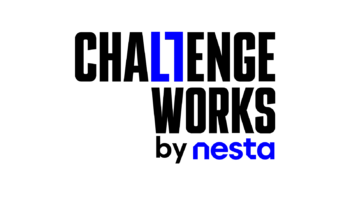News – Thought Leadership
How can challenge prizes advance broader policy objectives?
1 November 2019
Before and beyond solutions: how the Canadian Government’s Impact and Innovation Unit is using challenge prizes to communicate and advance broader policy objectives.
In 2017, the Canadian Government took bold and concerted strides to accelerate the use of innovative approaches to improve outcomes on issues that citizens care about, when it established the Impact and Innovation Unit (IIU). Situated within a central agency – the Privy Council Office – we were asked to experiment with new program delivery models and assess whether they help close the gap between policy development and implementation.
Under the auspices of Impact Canada (a part of the IIU), the principal approaches we use are challenge prizes, pay-for-success funding models, and behavioural insights. Since launching in 2017, Impact Canada has experienced rapid growth, with over $720 million of funding under its program authorities and a significant portfolio of behavioural insights projects. To read more about what we do and how we do it, please have a look at our annual report.
My name is Julie Greene, and I have the privilege of being a member of the Centre of Expertise for Impact Canada.
Challenge Works has been an integral partner for our team, guiding and supporting our efforts in co-designing challenge prizes with some of Impact Canada’s first clients.
In this blog, I want to reflect on something important we have learned while scoping, designing, launching and assessing challenge prizes over the last two years
When thinking about why a program or department might want to run a Challenge, we usually consider some of the following factors:
- Because there is an unknown solution to a known problem;
- To support and accelerate change in an issue area;
- To attract new innovators to the issue and;
- To build new markets or innovations developed as a result of challenges.
Those are often are our opening considerations when investigating a problem area that we might address or advance through a challenge prize.
As we have worked with multiple departments to launch Challenges that address issues of key importance to Canadians – creating smarter cities and clean technologies, improving Indigenous housing and responding to the opioid crisis – we are learning that when each partner decides to spend the extensive time and energy it can require to define and launch a well-researched and designed challenge, they have considered what might be accomplished beyond the solutions the Challenge may surface.
At the outset of planning, and until first stage assessment, the possible solutions that a Challenge may offer are unknown. We have defined, to the best of our ability, or (as we have heard Challenge Works’ Olivier Usher say many times), (insert Scottish brogue here) “we are reasonably certain”, that we understand the problem, current approaches, barriers to success and that a gap or opportunity exists that can be helped using a challenge prize. But we have no idea at that time what will actually happen when the Challenge is launched! So, as they consider the rationale for undertaking a Challenge, there are broader policy objectives that our partners want to express or explore through launching a prize.
Here are two examples.
1. Health Canada is the lead for Opioid Response, and Canada is in the midst of a crisis. The number of overdoses and deaths caused by opioids, including fentanyl, has risen sharply and continues to rise. We launched the Drug Checking Technology Challenge to improve on drug checking technology that will allow the community of people who use drugs and those who support them to make more informed decisions based on the composition of a drug. This opening statement on the Challenge platform sends a very clear and public signal that harm reduction (measures that reduce the negative effects of drugs and substances on individuals and communities, without requiring abstinence) is a key pillar of the Government’s approach. While critics of harm reduction believe that this approach normalizes risky behaviour, or delays movement toward treatment and abstinence, the Canadian Drugs and Substances Strategy “supports measures that reduce the harmful health, social and economic effects of substance use”.
Launching a Challenge to “create a rapid, accurate, easy to use, and low-cost testing device or instrument that can be used with minimal training and preparation work” sends a clear and direct message that our policy priority is to reduce death by opioid overdose, using all available levers. What more public way to communicate this priority than by inviting innovators of all kinds to help stop overdoses? Because as Tris Dyson says, “We want to use these prizes to solve these problems faster and better – making the most of talent, ideas and motivations out there, wherever they may be”.
2. Another example of how Challenges can help to communicate and advance broader priorities comes from Canada’s East coast, where commercial fishing and boatbuilding are important economic drivers for the region. Atlantic Canada is home to nearly 13,000 inshore fishing boats that use diesel fuel to power them to lucrative fishing grounds. In support of both better economic and environmental outcomes, the Atlantic Canada Opportunities Agency launched a Challenge to boat builders to develop an innovative hull that maximizes energy efficiency, lowers operational costs and reduces greenhouse gas emissions.
And yet, the Hull Design Efficiency Challenge has greater aspirations – to again send a clear and transparent signal that there is room to incentivize the acceleration and uptake of clean technologies in an industry which has traditionally relied on “tried and true” methods, often handed down over generations. Adoption of new, novel and more efficient approaches may face barriers to uptake including those are both financial and attitudinal. In this case, by designing a Challenge with specific supports and incentives that will move ideas toward commercialization, the Government is defining a clear space for innovation in clean technologies, and respectfully incenting more rapid progress in an industry almost as old as time itself.
When considering whether a challenge prize might be the right mechanism to help advance progress on your policy issue, it is also worth thinking about the ways this approach can help clearly articulate and communicate your policy positions to your target innovators, stakeholders and larger public.
So ask yourself, what ELSE can challenge prizes do for you?
Julie Greene is Lead for Partnerships for the Canadian Government’s Impact and Innovation Unit at the Privy Council Office and can be found on LinkedIn.

